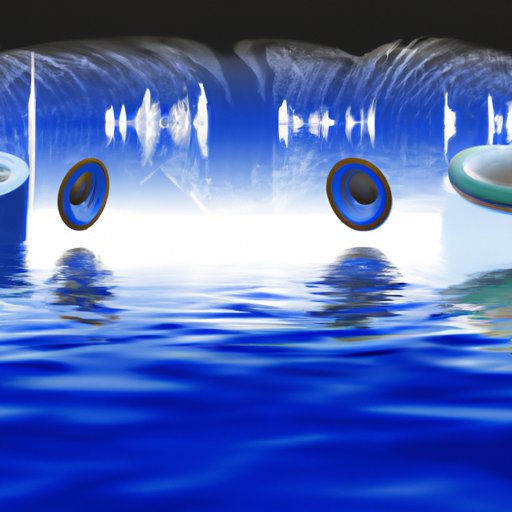Introduction
Spatial audio is an immersive sound technology that has become increasingly popular in recent years. It uses a variety of techniques to create a realistic three-dimensional soundscape that transports listeners to another world. This technology is used in a wide range of applications, from virtual reality experiences to movie soundtracks and music production.
Exploring Spatial Audio: What is it and How Does it Work?
To understand what spatial audio is, it’s first important to understand the basics of sound. Sound waves are created by vibrating objects and travel through air, water, and other mediums. When they reach our ears, they cause tiny hairs to vibrate, which sends signals to our brain and creates the sensation of hearing. The way we perceive these sounds is based on the volume and direction of the sound waves.
Spatial audio is a type of sound technology that uses multiple speakers to create a three-dimensional soundscape. This allows listeners to experience sounds as if they were in the same room with the source. By manipulating the sound waves, engineers can create a realistic and immersive sound experience.
The technology behind spatial audio is complex, but there are several key components that make it possible. First, multiple speakers are arranged in a specific pattern to create a surround sound system. This allows for a greater range of sound frequencies and makes it possible to create a realistic soundscape. Second, software is used to manipulate the sound waves and create different effects, such as reverberation and reflections. Finally, special algorithms are used to control the timing and intensity of the sound waves, allowing for a more realistic experience.
There are several different types of spatial audio, including stereo, 5.1, 7.1, and Dolby Atmos. Each type offers different levels of realism, depending on the number of speakers used and the complexity of the sound manipulation.
A Comprehensive Guide to Spatial Audio: The Basics and Beyond
In order to get the most out of spatial audio, it’s important to understand the fundamentals. Here are some key concepts to keep in mind when exploring this technology:
Reverberation and Reflection: Reverberation is the repetition of sound waves after they have bounced off a surface. Reflection is the bouncing of sound waves off a surface. Both of these effects can be simulated using spatial audio technology, creating a more realistic soundscape.
Surround Sound Formats: Different formats of surround sound offer different levels of realism. Stereo is the simplest format, while 5.1 and 7.1 offer more complex soundscapes. Dolby Atmos is the most advanced format, offering lifelike 3D sound.
Sound Manipulation: Manipulating sound waves is an important part of creating a realistic soundscape. Special algorithms are used to control the timing and intensity of the sound waves, creating a more immersive experience.

Creating Immersive Experiences with Spatial Audio
Spatial audio is used in a wide range of applications, from virtual reality experiences to music production. Here are some of the ways this technology is being used to create immersive experiences:
Enhancing Virtual Reality Experiences: Spatial audio is becoming increasingly popular in virtual reality (VR) experiences. By simulating sound in three dimensions, VR developers can create more realistic and immersive experiences.
Enhancing Music and Movies: Surround sound is commonly used in films and music recordings to create a fuller and more immersive soundscape. This technology is also used in live concerts and other events, allowing audiences to feel as though they are actually in the venue.
Enhancing Audio Production: Spatial audio can be used to create a wide range of sound effects, from echoes and reverb to complex soundscapes. This technology can also be used to mix and master recordings, allowing audio engineers to craft unique and immersive sounds.
Conclusion
Spatial audio is a powerful technology that can be used to create immersive soundscapes. From virtual reality experiences to music and movies, this technology is becoming increasingly popular as more people discover its potential. To get the most out of spatial audio, it’s important to understand the fundamentals and explore the different types of surround sound formats. With the right knowledge and tools, anyone can create amazing audio experiences.


